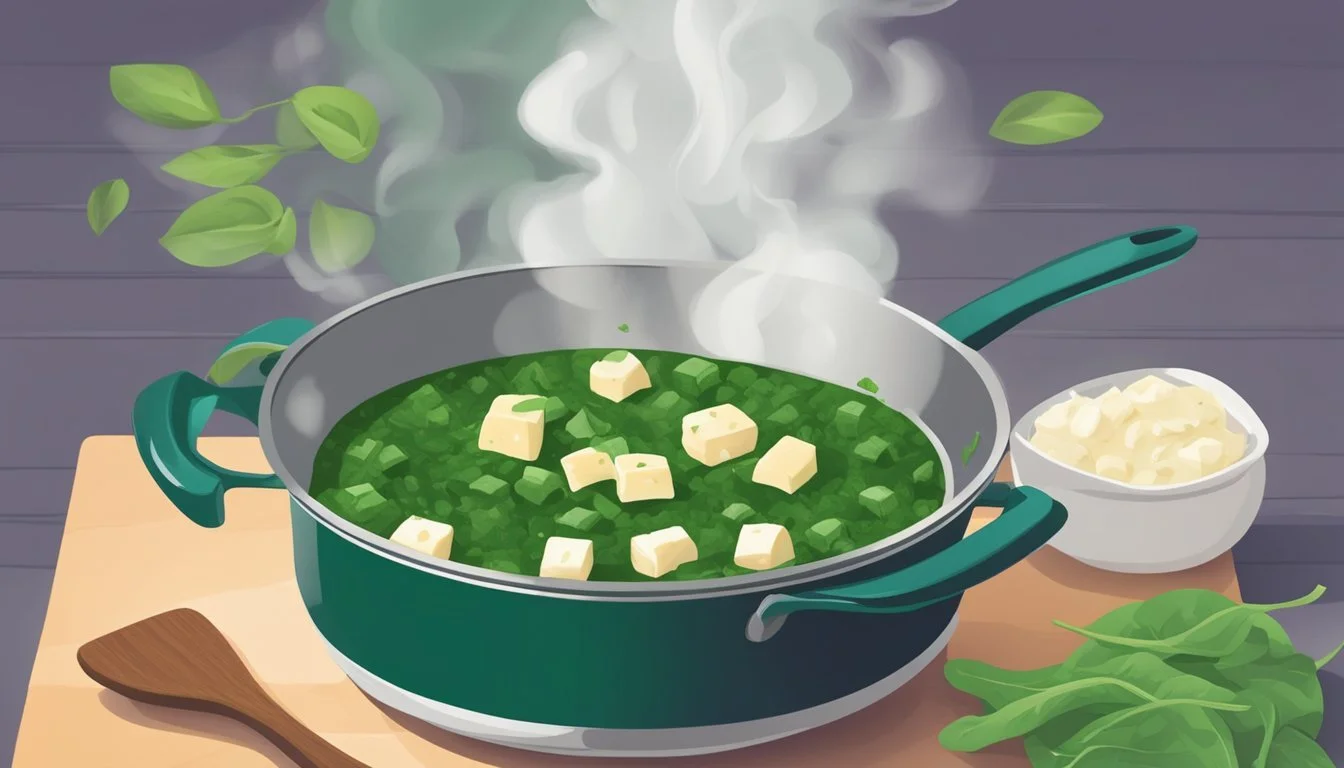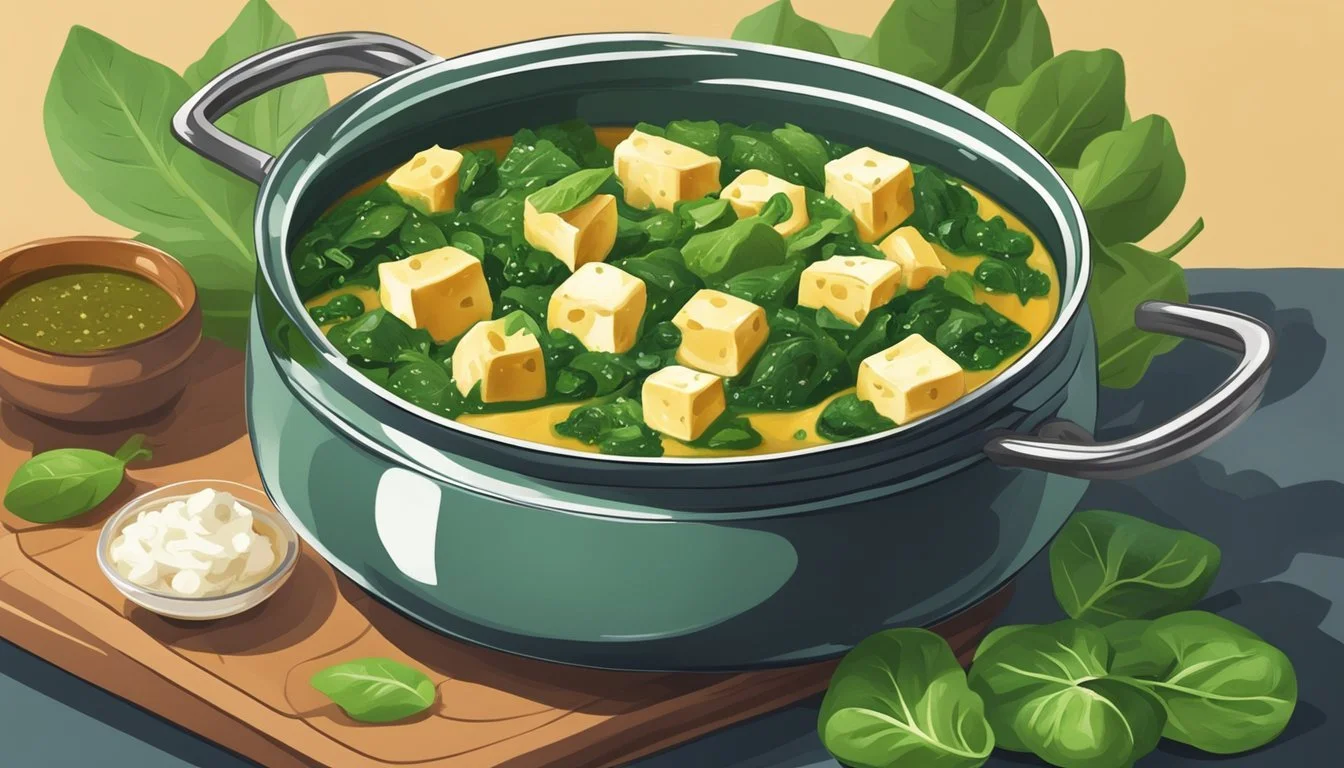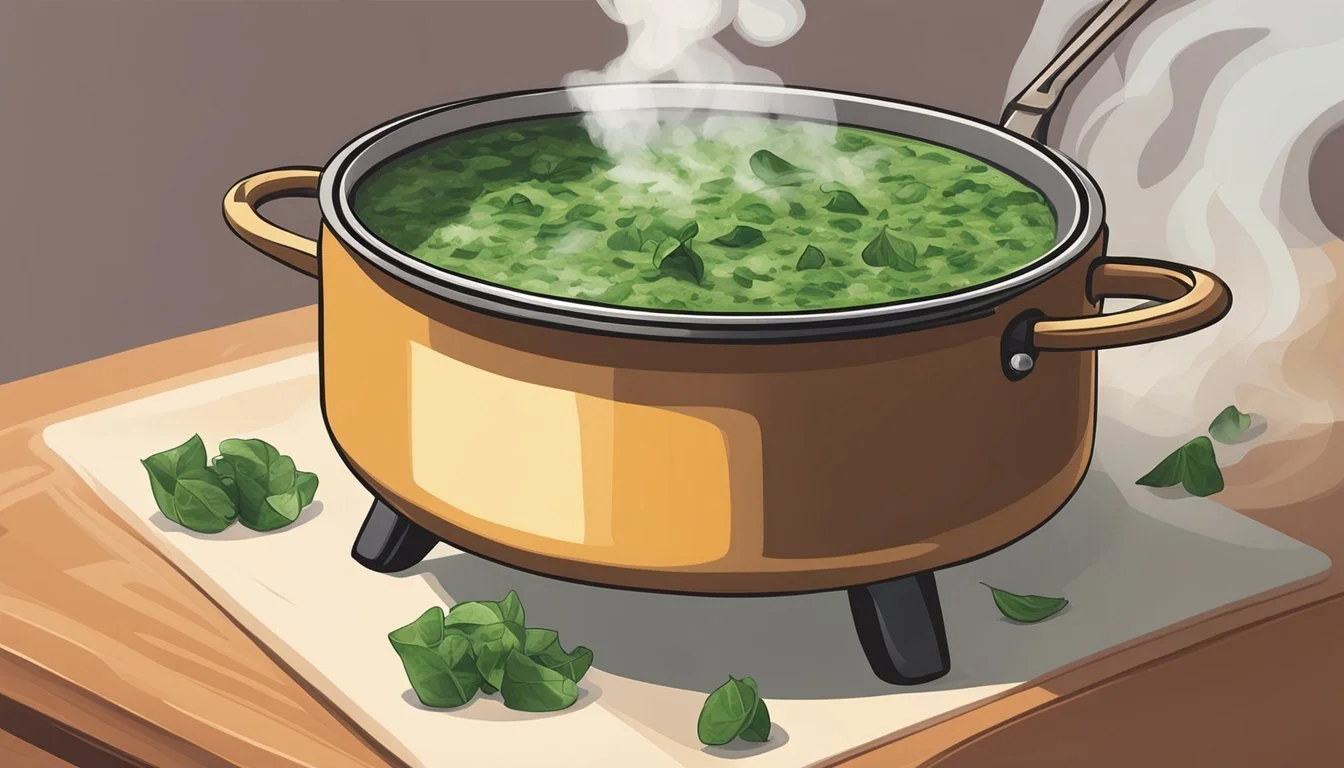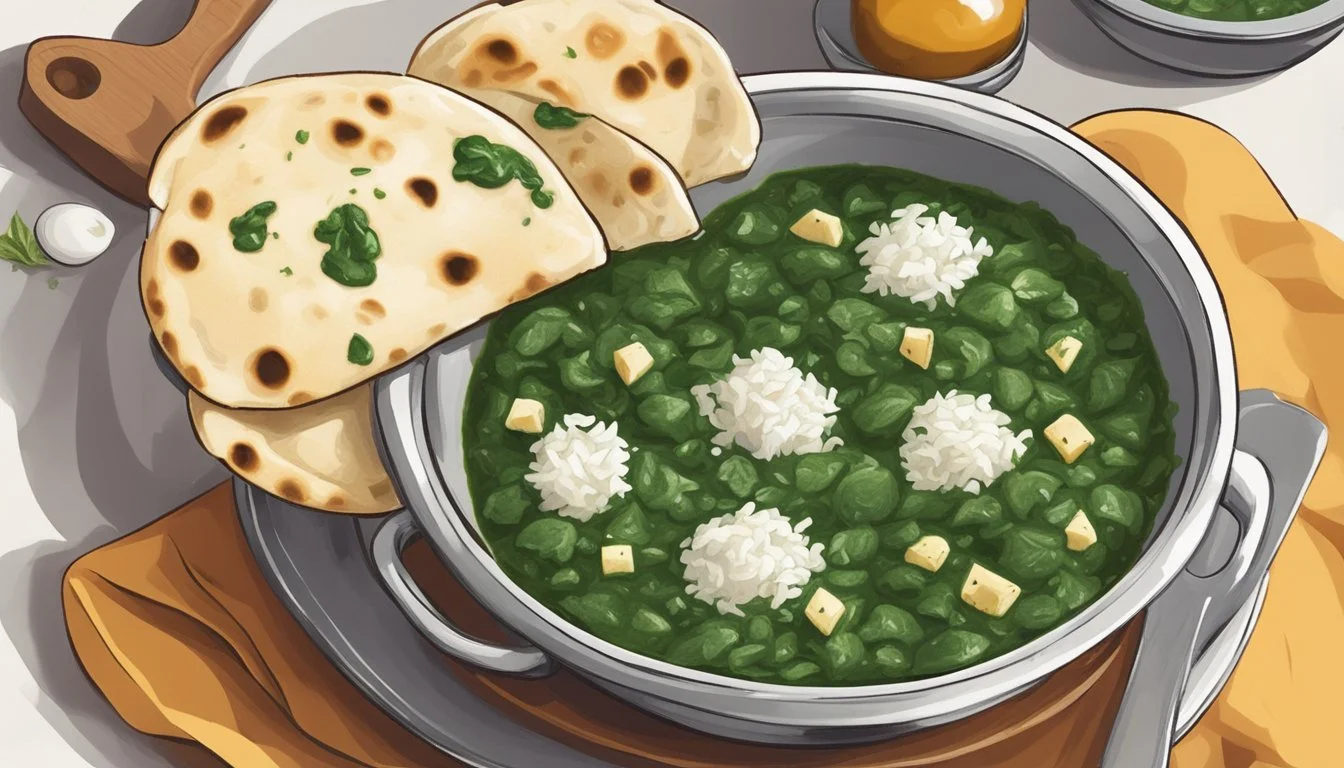Best Way to Reheat Indian Palak Paneer
Tips for Maintaining Creaminess and Flavor
Palak Paneer is a cherished Indian dish known for its earthy flavors and creamy texture. This vegetarian classic combines soft cubes of paneer cheese with a smooth spinach-based gravy, seasoned with a blend of aromatic spices. When it comes to enjoying leftovers, reheating Palak Paneer can be tricky; the challenge is to maintain the dish's creamy consistency while preserving its rich flavor profile.
The key to successfully reheating Palak Paneer lies in gentle heat and proper technique. Overheating can cause the paneer to become rubbery and the spinach sauce to separate, losing its velvety quality. To avoid this, one must employ methods that distribute heat evenly and reinvigorate the dish without compromising its delicate ingredients.
Understanding the dynamics of the dish's components, from the moisture content to the fat ratio, plays a crucial role in reheating. It's paramount to find a balance, allowing the flavors to meld together once again, restoring Palak Paneer to its original, just-cooked taste and texture. By following the right steps, one can ensure this Indian classic remains a comforting and flavorful meal, even the next day.
Understanding Palak Paneer
Before diving into the best practices for reheating Palak Paneer, it is essential to understand what Palak Paneer is and the benefits of its ingredients.
Components of Palak Paneer
Palak Paneer combines two primary ingredients: palak, which is Hindi for spinach, and paneer, or Indian cottage cheese. The dish often includes a variety of spices such as ginger and garlic, contributing to its aromatic flavor profile. Below is a basic breakdown of the core ingredients:
Spinach (Palak): Fresh spinach leaves are blanched and then pureed to form the base of the sauce.
Paneer: Indian cottage cheese, typically cubed and either pan-fried or grilled, then immersed in the spinach puree to absorb the flavors.
Aromatic Spices: Ginger, garlic, and other spices complement and enhance the dish's flavor.
Health Benefits of Ingredients
Palak Paneer is not only favored for its flavor but also for its nutritional value:
Spinach: A powerhouse of nutrients, spinach is rich in iron, vitamin C, potassium, and more. It's known for its role in promoting healthy skin, hair, and bone health.
Paneer: As a source of protein and calcium, paneer is an excellent addition to a vegetarian diet, supporting muscle health and bone density.
Ingredient Key Nutrients Spinach Iron, Vitamin C, Potassium Paneer Protein, Calcium
The combination of these ingredients not only makes Palak Paneer a delectable dish but also a wholesome choice. Whether prepared using a family recipe or enjoyed as a homemade meal, Palak Paneer remains a testament to the rich culinary heritage of India while providing a substantial and healthful meal.
Preparing the Palak Paneer Properly
Quality ingredients and proper techniques are crucial to making palak paneer that's both creamy and flavorful. This section will guide you through selecting the right components, blanching spinach, and creating the base for a delicious dish.
Choosing the Right Ingredients
Paneer: Fresh, firm paneer cubes are essential. They should be free of excess moisture to prevent a soggy texture when cooked.
Cream: For a luxurious feel, use full-fat cream. This will contribute to the richness of the dish.
Spices: Ground cumin, garam masala, turmeric, and coriander are the quintessential spices required. They must be fresh to ensure a robust flavor profile.
Ghee: This clarified butter is preferred for sautéing due to its high smoking point and the depth of flavor it provides.
Onion, Garlic, and Tomato: These aromatics should be fresh. The onion and garlic will form the flavor foundation, while the tomato adds a slight tang and sweetness.
Blanching Spinach for Optimal Texture
Select fresh spinach: Young and tender leaves are ideal as mature stems can make the gravy bitter.
Clean spinach thoroughly to remove any dirt or grit.
Boil water with a pinch of salt and submerge spinach leaves for 1-2 minutes until bright green and wilted.
Immediately plunge the blanched spinach into ice water. This stops the cooking process and maintains a vibrant green color.
Creating a Creamy Spinach Base
In a pan, heat ghee and sauté finely chopped onion until translucent.
Add minced garlic and grated ginger, sautéing until aromatic.
Tomatoes, diced small for quick integration, are cooked down with the aromatics.
Use a blender to puree the sautéed mixture along with the blanched spinach until smooth.
Fenugreek leaves can be added for an authentic touch, if available.
Return the puree to the pan, and with a low simmer, incorporate cream to achieve a rich and creamy consistency.
Adjust seasoning with spices – cumin, garam masala, turmeric, and coriander.
By following these steps, the palak paneer will be correctly prepared to maximize flavor and texture.
Reheating Methods for Palak Paneer
Proper reheating techniques are essential to maintain the creamy texture and rich flavor of Palak Paneer. Each method requires attention to detail to ensure the dish stays moist and heats evenly.
Stovetop Reheating Techniques
To reheat Palak Paneer on the stovetop, one should place the dish in a pan over low to medium heat. It is advantageous to add a small amount of hot water to the pan, which helps to thin the sauce slightly and keeps the Palak Paneer creamy while reheating. Constantly stirring is crucial to avoid burning and to ensure that the heat is distributed evenly throughout the dish. If the Paneer begins to feel rubbery, it may be helpful to reduce the heat and sauté gently until it reaches the desired temperature.
Microwave Reheating Tips
When using a microwave, the goal is to reheat Palak Paneer quickly and with ease. Place the Palak Paneer in a microwave-safe dish, adding a tablespoon of water to aid in maintaining its moisture. Cover the dish with a microwave-safe lid or a damp paper towel. Heat on medium power in 30-second intervals, stirring in between to distribute the heat and preserve the dish's creaminess and flavor. It's essential to avoid overheating as this can cause the Paneer to become chewy.
Oven Reheating Strategy
Reheating Palak Paneer in an oven can help retain its texture and taste, providing one follows the correct steps. Preheat the oven to 350 degrees Fahrenheit (175 degrees Celsius). Transfer the Palak Paneer into an oven-safe dish and mix in a few tablespoons of water to keep it moist. Cover the dish with aluminum foil to prevent the top from drying out. Heat for about 10-15 minutes or until the Palak Paneer is heated thoroughly. One should check periodically to ensure it does not overcook.
Maintaining Creaminess and Flavor
To ensure that reheated Palak Paneer retains its creamy texture and rich flavor, attention should be paid to the role of dairy and fats, as well as the correct incorporation of spices.
Utilizing Fats and Dairy
When reheating, the choice of fats and dairy products can greatly influence both the creaminess and taste of Palak Paneer. It's recommended to gently warm the dish over low heat to avoid separating or curdling. Ghee or butter can be introduced to the dish to enhance its richness and mouthfeel. For a non-dairy version, alternatives like cashew cream or coconut cream add a similar lusciousness. Adding a small amount of cream towards the end of reheating helps to retain the silkiness that might be lost during refrigeration.
Incorporating Spices Correctly
The timing and method of adding spices play a crucial role in preserving the flavor of Palak Paneer upon reheating. It's important to heat spices in a separate small pan with ghee or butter to release their aromatics before incorporating them back into the dish. This step, known as tempering, ensures that the spices do not end up tasting raw or overpowering. Spice blends, often grounded for Palak Paneer — like garam masala, cumin, and coriander — should be used judiciously to maintain the balance of flavors that might have mellowed when stored.
Serving and Pairing Suggestions
Palak Paneer is a versatile dish that shines alongside a variety of accompaniments. Selecting the right sides not only complements its flavors but also enhances the overall dining experience.
Best Accompaniments for Palak Paneer
Breads:
Rices:
Basmati Rice: Fragrant and fluffy, it pairs beautifully with the creamy curry.
Jeera Rice: Cumin seeds impart a nutty aroma, elevating the dish.
Enhancing the Dining Experience
Beyond the basic pairings, one can enhance Palak Paneer by including:
Vegetables: A side of sautéed vegetables like bell peppers, carrots, or green beans adds color and nutrition.
Curries: Offering a range of spiciness with additional curries encourages a full exploration of flavors.
Each of these options not only complements the palak paneer but also caters to personal preferences, making the meal more enjoyable for everyone at the table.
Storing Leftover Palak Paneer
When it comes to preserving the integrity and flavor of Palak Paneer leftovers, proper storage is essential. One can maintain the dish's creaminess by utilizing appropriate refrigeration or freezing techniques.
Refrigerating and Shelf Life
For short-term storage, refrigeration is the preferred method. Leftover Palak Paneer should be placed in an airtight container immediately after cooling to room temperature. It can be kept in the refrigerator for 2-3 days. The key to maintain freshness is ensuring that the container is sealed properly to prevent exposure to air and other contaminants.
Freezing and Reheating
For extending the shelf life of Palak Paneer, freezing is an effective option. To freeze, one should portion the Palak Paneer into servings and store in airtight containers or heavy-duty freezer bags. Properly stored, it can last for up to 2 months in the freezer. When reheating, it is preferable to thaw the frozen Palak Paneer in the refrigerator before heating it on the stovetop or in the microwave. Adding a splash of water or cream can help maintain the original texture and creaminess.
Alternative Ingredients and Variations
When adapting the classic Indian Palak Paneer recipe, one might consider alternative ingredients to cater to different dietary needs or simply to experiment with new flavors and textures.
Vegan Modifications
For those following a vegan diet, traditional paneer can be substituted with tofu. Tofu, like paneer, is versatile and absorbs flavors well. It should be pressed to remove excess moisture and then can be fried or baked to achieve a texture similar to that of paneer. When it comes to incorporating that rich, creamy consistency, coconut milk or almond milk makes for an excellent dairy-free alternative. Additionally, to emulate the distinct flavor of fenugreek leaves, one can use dried fenugreek leaves (kasuri methi), which are readily available and can be sprinkled over the dish before serving to enhance its aroma and taste.
Experimenting with Different Cheeses
For those not restricted to a vegan diet, experimenting with a variety of cheeses can bring a new dimension to the dish. Cheeses such as halloumi or feta can be used as a substitute for paneer; they both hold their shape well when heated and provide a different flavor profile. Halloumi is firmer and saltier, offering a pleasant contrast to the creamy spinach, while feta adds a tangy kick. When using alternative cheeses, it is essential to consider their melting properties and adjust the cooking method accordingly to avoid over-melting or under-cooking.
Conclusion
Reheating Palak Paneer requires a method that preserves its lush texture and rich flavors. One should approach the task confidently, armed with the knowledge that a careful process ensures the dish remains creamy and delicious.
When dealing with homemade paneer, it's essential to reheat gently to maintain its integrity. The paneer must not be allowed to turn mushy or tough. Users can confidently follow these tips for best results:
On the stovetop: Reheat in a pan over low heat, stirring occasionally.
In the microwave: Use medium power and short intervals, stirring in between.
To preserve the flavorful qualities of Palak Paneer:
Add a splash of water or cream to revive the sauce.
Heat until just warm to prevent overcooking.
Remember, knowledge of the proper techniques transforms a simple reheating process into an opportunity to rejuvenate a dish's essence. Each step, from the choice of heating method to the cautious application of heat, contributes to a serving of Palak Paneer that one can serve with confidence, as flavorful and creamy as when it was freshly made.







